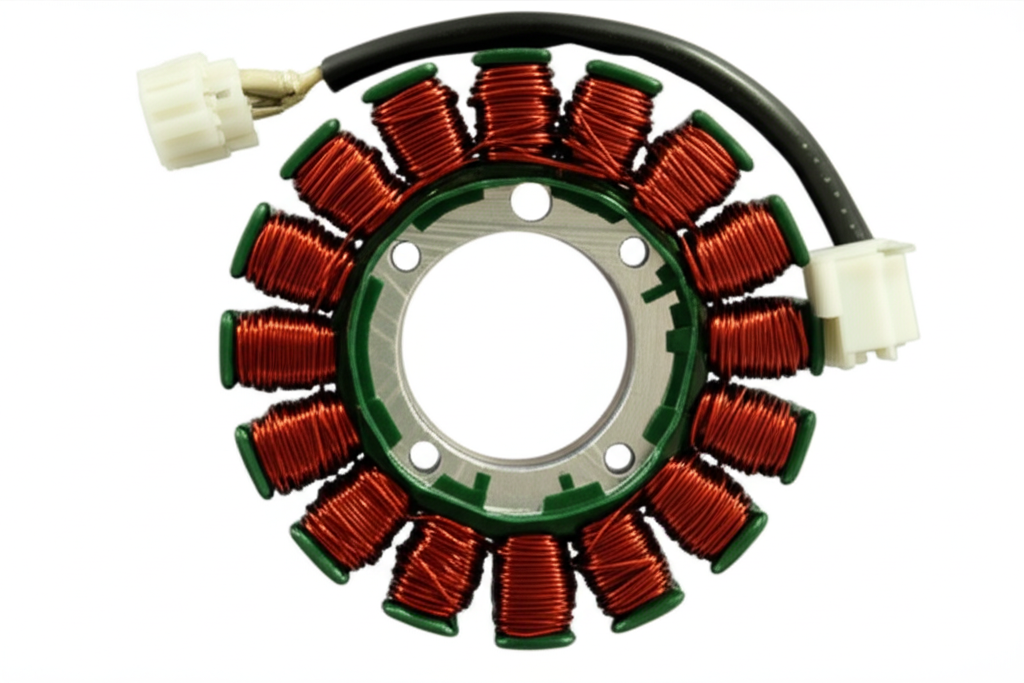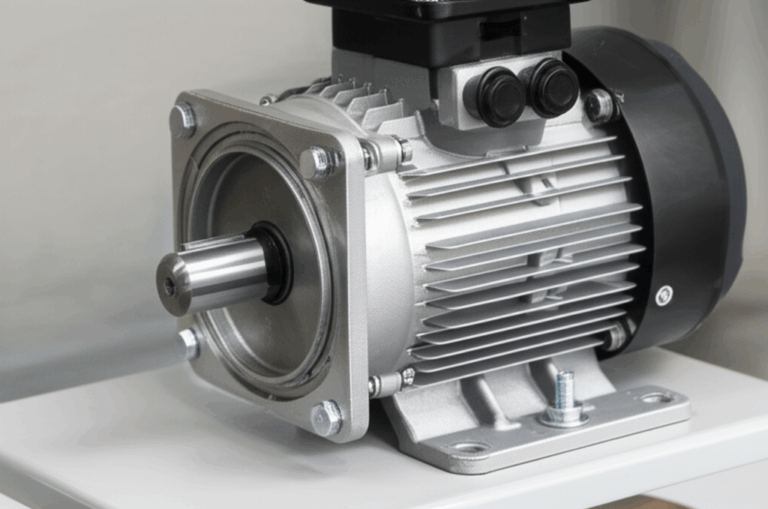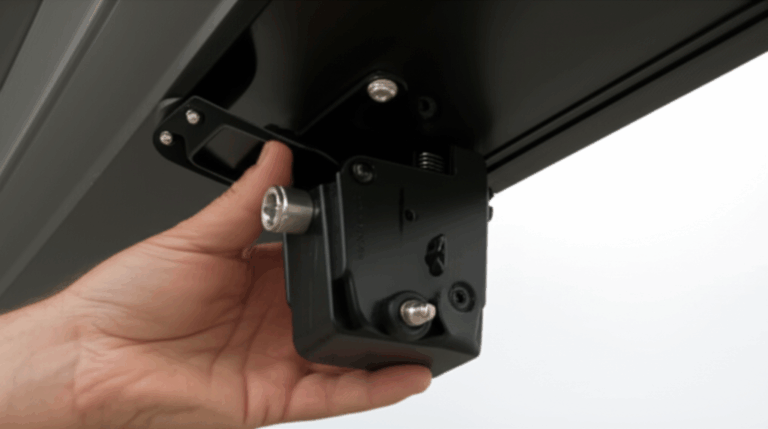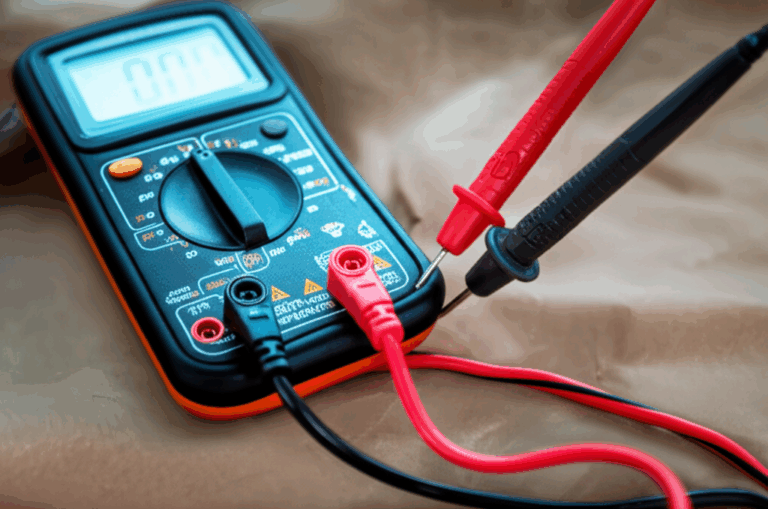
Does a Stator Produce AC or DC? Understanding How Electricity is Generated
Table of Contents
- What You Will Learn
- Does a Stator Produce AC or DC
- What Is a Stator
- How Does Electromagnetic Induction Make Power
- What Is the Difference Between AC and DC
- How Do We Turn AC Into DC
- Where Do You See Stators in Real Life
- What Parts Work With the Stator
- How Do You Test a Stator and Fix Common Problems
- Why Do Laminations Matter So Much
- Simple Math and Units You Will Use
- Common Myths About Stators
- Quick Guide: Stator Output in Real Machines
- Do You Need a FAQ
- Key Takeaways
You want the short answer. A stator makes AC. Always. Then a rectifier or a commutator can turn that AC into DC if the system needs it. In this guide I show you why that is true, how a stator works, where you see it, and how to test it. I keep it simple. You leave with power you can use.
Problem. Many people mix up AC and DC in alternators and generators. That can lead to bad repairs, weak charging, and dead batteries.
Agitate. I have seen headlights flicker from ripple voltage. I have seen a motorcycle strand a rider after a hot day because the voltage regulator failed. The wrong fix can waste time and money.
Solution. Learn how a stator makes AC by electromagnetic induction. Learn how rectifiers and regulators make DC smooth. Pick good parts. Use good laminations. You get steady power and long life.
What You Will Learn
- The stator’s job in a generator or motor
- Why AC comes first from the stator
- How rectifiers and commutators make DC
- Where this shows up in cars, bikes, boats, and the grid
- How to test output voltage waveform, stator resistance, and insulation
- Why core losses and copper losses matter
- How better laminations cut heat and boost efficiency
Does a Stator Produce AC or DC
Here is the clear answer. A stator produces Alternating Current. The current and voltage rise and fall in a wave. The direction flips back and forth. That is AC current generation.
Why. A rotor swings a magnetic field past the stator windings. The magnetic flux changes with time. Faraday’s Law says a changing magnetic field makes electromotive force. We call it EMF. That EMF drives current. The polarity flips as north and south poles pass. So the current alternates.
You can turn that AC into DC with a rectifier bridge or a commutator. You can filter it with a capacitor to smooth DC. Yet inside the stator the raw output is AC.
What Is a Stator
A stator is the stationary part of a motor or generator. It holds copper windings around an iron core. The iron core guides magnetic flux lines and boosts EMF. We also call the stator a stationary armature in many alternators.
The rotor is the moving part. It spins inside the stator. The air gap between stator and rotor stays small. The number of poles in the stator and the rotor set how fast the magnetic field rotates for a given speed. The stator lamination construction and stator core material cut core losses and heat.
In a three-phase stator you see three sets of coil windings. They sit 120 degrees apart. That layout makes three-phase AC which is smooth and strong.
How Does Electromagnetic Induction Make Power
Faraday’s Law of induction says the induced EMF equals the rate of change of magnetic flux through the coil. When the rotor spins the magnetic field over a stator coil changes. The flux goes up and down then it reverses. So the induced current goes up and down then it reverses. That gives you an AC output voltage waveform that looks like a sine wave.
Lenz’s Law says the induced current makes a magnetic field that opposes the change that caused it. That rule sets the direction of current each instant. When the north pole passes the coil the current flows one way. When the south pole passes the current flows the other way. That is alternating polarity. That is the dynamo principle in action.
The frequency of AC current depends on speed and poles. We measure frequency in Hertz. Twice the speed means twice the frequency if poles stay the same. In power plants we hold speed so we get 50 Hz or 60 Hz. In engines the frequency varies with RPM.
What Is the Difference Between AC and DC
AC means Alternating Current. It changes size and direction with time. Voltage also changes size and polarity. We describe AC by its frequency in Hertz and RMS voltage in Volts.
DC means Direct Current. It flows in one direction. Voltage holds the same polarity. DC can be smooth or it can be pulsating DC with ripple voltage. Many electronics and batteries want smooth DC.
Why does this matter. AC power transmission over long lines works well with transformers. AC is easy to step up and down. That is why big power plants use AC power for the electrical grid. DC power applications shine in batteries, vehicles, and electronics. DC motor operation in toys and tools can be simple. AC motor operation rules in appliances and pumps.
How Do We Turn AC Into DC
We use a rectifier. A semiconductor rectifier uses diodes. A diode lets current flow one way and blocks the other. A diode bridge rectifier flips the negative half cycles and steers them so the output is all one direction. That makes pulsating DC.
In a three-phase alternator the stator makes three-phase AC. The rectifier bridge has six diodes. It gives full-wave rectification. That means every half cycle helps. You get less ripple voltage than half-wave rectification. If you need smooth DC you add a capacitor filtering effect and a voltage regulator. The voltage regulator keeps voltage steady as load and speed change.
A commutator can also make DC. In a DC generator a commutator and brushes switch the coil connections as the rotor turns. It turns the internal AC in the armature into DC at the output. This works yet brushes wear. So alternators with rectifiers replaced dynamos in most cars.
Where Do You See Stators in Real Life
- Automotive alternator. The stator makes three-phase AC. The rectifier and voltage regulator convert and control it. The final system output is 12 to 14.7 V DC to charge the automotive battery and power the vehicle electrical system. Brands like Bosch and Delco Remy make alternators with strong efficiency of alternators and solid diode bridges. Modern units reach 80 percent efficiency.
- Motorcycle stator. A permanent magnet stator output feeds a rectifier regulator. The engine speed sets the output frequency. You get 13 to 14.5 V DC for lights and the battery. A motorcycle stator AC output can be single-phase or three-phase.
- Marine alternator and recreational vehicle alternator. Same idea as cars. They use a rectifier regulator and output DC. They often push higher current for house loads.
- Heavy equipment alternator. Big machines need strong DC for work lights, pumps, and control. The alternator stator output is AC inside then goes through a semiconductor rectifier.
- Generator set at home. Many portable generators use an alternator. They can output AC for tools. Some sets have an inverter. They make AC, turn it to DC, then invert DC to clean AC.
- Wind turbine stator and hydroelectric generator stator. These are synchronous generator or induction generator designs. A large stator produces high-voltage three-phase AC for the grid. The power plant generator type depends on site and size. Units from Siemens or General Electric supply Megawatts. They connect to a transformer and the electrical grid.
- Brushless alternator mechanism. In many machines an exciter makes AC which is then rectified on the rotor to feed the field coil. Slip rings or brushes are small or not used. This improves life.
What Parts Work With the Stator
The rotor creates the rotating magnetic field. It can use a field winding excitation or permanent magnets. Slip rings function to feed DC into a spinning field coil. Brushes ride on slip rings to pass current. In brushless machines a rotating rectifier can remove brushes.
The voltage regulator keeps the system at a set voltage. It controls the field current. More field current means more magnetic flux lines and more output. Less field current means less output. The battery stores energy. It wants DC. The regulator avoids overcharge and undercharge.
Power factor correction matters for large AC systems. The current and voltage can be out of phase. Capacitors or other devices can fix the power factor. This reduces losses and heat in cables and transformers.
How Do You Test a Stator and Fix Common Problems
Use a wiring diagram stator view to find test points. Start with a stator resistance test. Measure between coil leads with a meter. Use Ohm’s Law to compare values. High resistance means an open coil. Very low resistance means a short.
Do a stator insulation check. Measure from coil leads to the iron core. You should see no current. If you see current you have an insulation fault. That can lead to core losses and heat.
Check open circuit voltage stator. Spin the rotor and measure AC volts with no load. The output should rise with RPM. Check short circuit current stator only with a current clamp and for a short time. Too much current can damage parts.
Watch symptoms of bad stator. You may see dim lights, dead battery, hot smell, melted connectors, or a noisy voltage regulator. The rectifier bridge function can fail too. A bad diode makes ripple and weak DC. The battery may boil or it may not charge.
If you fix a motorcycle charging system always test the rectifier regulator explained in the service steps. Confirm current flow direction with the diode test on your meter. Make sure the output voltage waveform looks right if you have a scope. It should be a clean three-phase AC before the rectifier.
Why Do Laminations Matter So Much
The stator core uses thin steel laminations. Thin sheets cut core losses in stator by stopping eddy currents. Better steel also cuts hysteresis loss. Less loss means less heat. Less heat means more power and longer life.
If you build or buy cores the quality of the stator core laminations matters. Good stacking and tight tolerances in core lamination stacks keep the air gap even. Better laminations also reduce vibration and noise.
The rotor needs the same care. Matched rotor core laminations help the magnetic field stay strong and smooth. In motors and generators the pair works as a team.
If you design a machine you can source full motor core laminations. For BLDC designs a well made bldc stator core gives high torque and low cogging. The right alloy and the right thickness lower core loss at high Hertz.
You also need clean steel. Premium electrical steel laminations like silicon steel laminations, CRGO lamination core, or CRNGO lamination grades deliver low loss. They boost efficiency of alternators, transformers, and motors. In power conversion technology every watt saved counts.
Problem. Poor laminations raise core loss. The stator runs hot. The voltage sags. The regulator works hard. Copper losses in stator go up too.
Agitate. Heat kills insulation. Ripple grows. Bearings suffer. Your customer complains.
Solution. Use high grade laminations and tight stacks. Keep the air gap right. Choose the right number of poles stator for your speed and frequency target. You get smooth AC and easy rectification to DC.
Simple Math and Units You Will Use
We measure voltage in Volt. We measure current in Ampere. We measure power in Watt. You can use power equals volts times amps for DC. For AC power you must also consider power factor. That is why power factor correction matters in big systems.
We measure frequency in Hertz. In a car alternator output frequency depends on engine RPM and pulley ratio. It can range from about 50 Hz at idle to a few hundred Hertz at high speed. In a large plant the synchronous generator output holds 50 Hz or 60 Hz so the grid can stay stable.
Ohm’s Law in circuits says V equals I times R. It helps with stator resistance tests and current estimates. Use it to plan conductor size. Use it to check voltage drop in a vehicle electrical system.
Common Myths About Stators
Myth. A stator can make DC. Truth. The stator always makes AC. You get DC only after rectification or with a commutator in a DC generator.
Myth. More windings always give more power. Truth. Windings and wire size need to match volts, amps, and frequency. Too much resistance causes copper losses. Too many turns can saturate the iron core.
Myth. You can skip the voltage regulator. Truth. Without a regulator your battery can overcharge or your lights can dim at idle. A good regulator keeps voltage steady. It protects electronics like LED lighting and ECUs.
Quick Guide: Stator Output in Real Machines
Here is a simple table you can use. It shows stator output and conversion in common systems.
| Feature/Application | Automotive Alternator | Motorcycle Stator | Large Power Plant Generator | DC Generator (Dynamo) |
|---|---|---|---|---|
| Stator’s Raw Output | AC three-phase alternating current | AC one or three-phase | AC high voltage three-phase | AC inside the armature |
| Principle | Electromagnetic induction by Faraday’s Law | Electromagnetic induction | Electromagnetic induction | Electromagnetic induction |
| Conversion | Diode bridge rectifier to DC | Rectifier regulator to DC | None at generator output | Mechanical commutator to DC |
| Final Output | 12–14.7 V DC | 13–14.5 V DC | 11–25 kV AC stepped up | 6–24 V DC |
| Typical Power | 70–200 A at 14 V | 100–500 W | MW to GW | Tens to hundreds of watts |
| Output Frequency | Varies with RPM | Varies with RPM | Fixed 50 Hz or 60 Hz | Varies inside then commutated |
| Efficiency | Up to 80 percent | 60–75 percent | 95–99 percent | 60–80 percent |
| Key Parts | Stator, rotor, rectifier, voltage regulator, battery | Stator, permanent magnet rotor, rectifier/regulator | Stator, rotor, exciter, cooling, transformer | Stator, rotor, commutator, brushes |
| Primary Purpose | Charge battery and power vehicle electrical system | Charge battery and power bike | Feed the electrical grid | Direct DC for early systems |
Note how universality of AC induction shows up. The stator makes AC. The difference in AC vs DC at the terminals comes from the conversion mechanism.
Do You Need a FAQ
I will answer a few fast questions.
- Why does a car alternator produce AC inside yet the car runs on DC? The alternator makes AC inside because of electromagnetic induction. A diode bridge rectifier then converts AC to DC for the battery and electronics.
- Does a permanent magnet generator still make AC? Yes. The permanent magnets on the rotor still create a changing magnetic field as they turn past the stator windings. That changing field induces AC. You then rectify if you want DC.
- Can an induction generator work for wind? Yes. An induction generator working with a grid can produce three-phase AC when driven above synchronous speed. Power inverters can manage variable speed and produce clean AC for the grid.
Key Takeaways
- A stator inherently produces AC due to electromagnetic induction by Faraday’s Law and Lenz’s Law
- The AC output voltage waveform flips polarity as north and south poles pass the coil windings
- Rectifiers make DC from AC with full-wave rectification which gives pulsating DC with less ripple voltage
- Capacitor filtering and a voltage regulator make smooth DC for batteries and electronics
- Alternators in cars, trucks, motorcycles, marine systems, and heavy equipment produce AC inside then output DC after rectification
- Synchronous generators in wind, hydroelectric, diesel generator, gasoline generator, and power plant systems produce three-phase AC for the electrical grid
- DC generators use a mechanical commutator vs rectifier diodes to output DC which needs brush maintenance
- Good stator lamination construction with the right iron core and air gap cuts core losses and heat which boosts efficiency
- Use tests like stator resistance test, stator insulation check, open circuit voltage stator, and short circuit current stator to troubleshoot
- Mind copper losses in stator and core losses in stator to keep systems efficient and cool
- Plan for phases of current, number of poles stator, and Hertz frequency unit when you design or test
- Use Ohm’s Law and basic power calculation in Watt for quick checks on voltage measurement and current measurement
- Pick high grade materials and proper stack build for laminations to ensure smooth magnetic flux lines and strong electromotive force
- AC generator vs DC generator distinction sits in the conversion step not in the stator itself which always induces AC
- When DC is needed convert AC to DC then filter the ripple and regulate the voltage for a smooth final system output
References
- Bosch Automotive Handbook
- Delco Remy Technical Service Information on alternators
- IEEE tutorials on synchronous and induction generators
- U.S. Department of Energy resources on AC power transmission and the electrical grid
- Standard textbooks on Electromagnetism, Faraday’s Law, Lenz’s Law, and transformers








